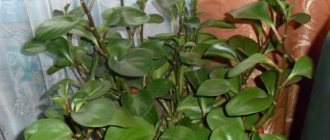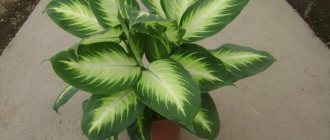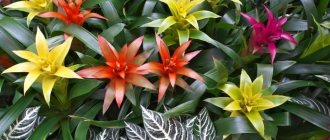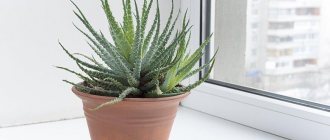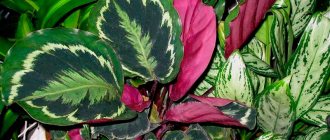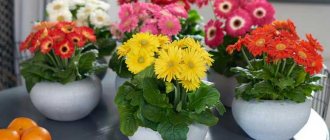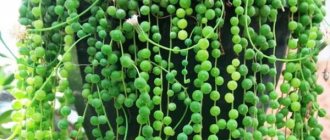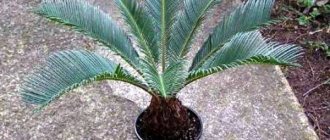If you are a lover of beautiful and long-blooming indoor plants, the flowers of which exude a magical aroma, we recommend purchasing Gardenia Jasminoides (Jasmine). This flower captivates with its snow-white, wax-like, double flowers, the aroma of which, during long flowering, fills the space around itself with the wonderful scent of jasmine. It is believed that Gardenia Jasmine symbolizes femininity, grace and beauty. Caring for Gardenia Jasmine at home is fraught with some difficulties, but rest assured, our article will help even novice gardeners overcome them all!
Some facts from the history of the flower
The Song Dynasty, which lived approximately a thousand years ago, was the first to tell the world about the wonderful flowers of Gardenia. Pots with these flowering plants decorated the chambers of the emperors of China. The court gardeners did not allow the bushes to grow and formed the bushes in the form of bonsai (spectacular miniature trees with a fancy crown) and ensured that they bloomed abundantly and luxuriously.
An unusual flower, with snow-white fragrant flowers, its smell reminiscent of blooming jasmine, was first described by the American botanist Alexander Garden in the 13th century. This plant was later named after him.
In Europe, Gardenia Jasmine appeared in the mid-18th century, where they also began to shape its crown using pruning. There she competed in beauty and fragrance with the most luxurious roses and peonies.
Feeding and fertilizer
What soil is needed for gardenia jasmine? Capricious gardenia requires special selection of soil with a slightly acidic pH level. If there are lime components in the composition, it dies.
To prepare the soil yourself, you should stock up on the necessary elements and patience. If you are not confident in achieving your goal, it is better not to experiment; the flower will begin to fade and in an attempt to save money, you can destroy the plant.
The soil composition includes:
- sand component;
- turf part;
- coniferous peat land;
- rotten leaf soil.
As for periodic fertilizing of the soil for gardenia jasmine, it is better to use liquid types of fertilizers, adding 1-2 times a week when watering. Properly selected mineral fertilizer for gardenia jasmine not only improves health, but also preserves the growth, flowering, and development of an evergreen flower.
Description of the flower
Gardenia Jasminoides (Gardenia Jasminoides) has synonyms - Gardenia Augusta, Cape jasmine. This is an evergreen plant from the Mirenaceae family. It is native to the tropical forests of India, China and southern Africa. There it grows, most often in the form of shrubs, but there are trees up to two meters in height.
- Indoor specimens usually grow to sizes of 60–80 cm.
- The shoots are smooth, bare, highly branched, woody.
- Dark green leathery leaves, up to 8 cm long, grow in pairs on short petioles. In shape they are broadly lanceolate or reverse ovoid, glossy, narrowed towards the base.
- Gardenia jasmine blooms in nature twice a year.
- It has oval, pointed at the tip, leathery, dense leaves.
- It blooms with large double or simple fragrant white flowers up to 8 cm in diameter.
- When optimal growing conditions are created indoors, it can grow well for up to 7-8 years.
The beautiful shape of the Gardenia flower with originally arranged glossy petals is reflected in needlework. Craftswomen create with their own hands unique kanzashi in the form of Jasmine Gardenia flowers to decorate brooches, hairpins, hairbands, as well as gifts from polymer clay.
The scent of Gardenia Jasmine is used by famous perfume brands, such as: Nina Ricci Premier jour, Dior Addict Shine, Chanel Gardenia, Dior Miss Dior, Estee Lauder Intuition, Agent Provocateur, Guerlain Cruel Gardenia.
In addition to its spectacular appearance and unique aroma, Gardenia is valued for its healing properties. For example, the roots and fruits of this plant are used to prepare medicinal decoctions for the treatment of tonsillitis, stomatitis, and jaundice. They are used to make antipyretic, anti-inflammatory and hemostatic agents.
Plant characteristics
Gardenia jasminoides is a flower of the madder family with dense leathery leaves. In total, the genus Gardenia has about 250 species.
- flower color – white and yellow;
- fruit color – red, fleshy;
- leaf color – dark green;
- need for sun - diffused light is needed;
- size – up to 50 centimeters at home;
- flowering - from late spring to mid-October;
- The aroma is reminiscent of jasmine.
When planning to grow gardenia, remember that this is a rather capricious plant that requires special care. The flower is sensitive to changes in environment, so there is no need to turn it during the flowering period. With proper care, gardenia will always delight the owner with beautiful and fragrant flowers.
Planting and care at home - briefly
Like many exotics, gardenia jasmine is whimsical and demanding to care for. In indoor conditions it is difficult to create the conditions to which this “tropicana” is accustomed, but if certain rules are followed, it will bloom luxuriously and delight with its decorative appearance.
| Temperature | In summer +22-+25 degrees, in winter – not lower than +15. |
| Air humidity | Requires high humidity, frequent regular spraying, and placing the pot on a tray of water. |
| Lighting | On window sills on the south side it requires shading; the optimal location is on the east or southwest side. |
| Watering | The soil in the pot should be constantly moist, but the plant should not be overwatered. |
| Priming | The acidity of the soil is within the pH range of 4-5; humus, peat, turf soil and sand are mixed to make up the substrate. |
| Feeding and fertilizer | The active growing season requires fertilization with complex mineral compounds without lime. |
| Transfer | Replant once every 2-3 years. |
| Reproduction | Cuttings or seeds. |
| Features of cultivation | In order to bloom actively and luxuriantly, temperature changes, complete drying of the soil and drafts should not be allowed. |
Main problems when growing
All gardenia diseases that are not associated with plant damage by pests are caused by improper care. The choice of method for saving your tropical beauty largely depends on the cause of the disease.
Why do the leaves turn yellow?
The most common cause of yellowing leaves is improper watering of the plant. It is important to remember that gardenia is harmed by both lack and excess moisture.
If everything is in order with watering, then yellowness on the leaves can also occur due to a lack of iron. The situation can be corrected by feeding with special preparations containing iron, for example, Ferovit.
Another reason for yellowing leaves is a sharp change in temperature. Remember that gardenia is very sensitive to all changes and try to provide it with comfortable and stable conditions.
Why do the leaves turn black and fall off?
Gardenia leaves turn black and fall off, most often due to damage to the root system. To fix this problem, you should check to see if the soil drains well and that the drainage holes are not clogged. These reasons can provoke stagnation of water, which leads to rotting and weakening of the plant’s root system. The problem with the root system can be solved by replanting the plant.
Why doesn't gardenia bloom?
A prolonged absence of buds on a gardenia may indicate the following problems:
- lack of sunlight: in this case, you should move the pot to a more illuminated area or purchase a special phyto-lamp;
- insufficiently acidic soil: this problem can be solved by fertilizing the soil;
- dry air: it is necessary to humidify the air at the location of the plant (see methods above).
Gardenia leaves turn black and yellow and then fall off
This problem may be a consequence of improper plant replanting. Small roots, which are responsible for feeding the entire plant, are damaged when the soil is changed. As a result, gardenia leaves begin to turn yellow or black and fall off quickly (several leaves per day). This cannot be done without another transplant in compliance with all the rules.
It is important to note that moderate defoliation of older plants is a natural process. You should be afraid only when the phenomenon becomes widespread.
Leaves turn black but don't fall off
Blackening of the leaves is caused by improper watering of the plant. This problem can develop against the background of both overdried and waterlogged soil.
It should be remembered that watering should be regular and moderate.
Why does it dry out?
A common reason why gardenias dry out is low humidity levels. Do not forget to regularly spray the plant and wipe its leaves with a damp cloth.
Dropping buds and flower buds
All reasons that worsen the general condition of gardenia also influence the refusal of flowering:
- insufficient lighting - if there are buds left on the plant, it is better to supplement the lighting with a phyto-lamp than to move the pot;
- lack of iron or nitrogen - in this case, the balance should be restored gradually, otherwise the opposite effect can be achieved;
- low humidity - increasing air humidity by spraying and placing the pot on a tray with wet pebbles.
How long does the adaptation period last?
This tropical plant is very delicate and sensitive, so it tolerates all changes with difficulty. After purchasing a gardenia, it needs acclimatization, which lasts about 2-3 weeks.
Caring for gardenia jasmine at home
The capricious nature forces the owners of this luxurious flower to pay a lot of attention to it. If conditions are violated, the plant immediately reacts to the changes - the leaves turn yellow and the buds fall off. But with proper care, the dark green bush becomes covered with a lush snow-white head of flowers, which contrast brightly against the backdrop of lush greenery.
How to care after shopping in a store
Immediately after purchase, the bush is replanted, since store-bought soil is poor for normal growth of gardenia, and the container is small and does not allow the rhizomes to grow freely. Replanting is not done on the first day: the plant must adapt for about 2 weeks. Before the procedure, the gardenia is watered with warm water and, together with an earthen lump, is transferred to a prepared pot. This is mandatory, even if the bush was purchased with buds.
Bloom
The flowering period of gardenia jasminoides begins in late spring and lasts until mid-October. But you may not be able to wait for beautiful snow-white buds, since in order for the plant to bloom, it must be kept in special conditions. Already in March-April you need to monitor the temperature.
The readings on the room thermometer should not fall below +16 degrees and rise above +20. As soon as the first buds appear, more careful care is required. Humidity, frequency of watering and lighting are also important.
Why doesn't gardenia bloom?
Cases associated with the complete absence of the budding process are accompanied by:
- inappropriate soil acidity;
- watering the plant with cold or hard water;
- insufficient air humidity in the room;
- sudden changes in temperature;
- poor lighting or lack thereof;
- excess or deficiency of mineral supplements.
To return gardenia to flowering, you need to adjust its growing conditions, eliminating negative factors.
Temperature
For indoor gardenia jasmine, the temperature in the room is very important. If the room is cold, it will not bloom, and a flowering plant will definitely shed its buds. The optimal temperature for the plant is not lower than +20-+23 degrees. In winter, it should not fall below +16.
Spraying
Considering that the plant comes from the tropics, for indoor cultivation it is necessary to maintain high humidity. To do this, use special devices, as well as regularly spraying the leaves of the plant with a spray bottle.
It’s good if the flower pot is placed in a large tray with wet expanded clay.
Lighting
Gardenia jasminoides indoors should be kept in a well-lit room, but direct sunlight should be avoided. A place near a window on the southwest side is perfect. The flower does not like to be moved; from the moment of its acquisition, you need to choose a permanent place for it, where the plant would be comfortable.
Watering
Homemade gardenia jasmine does not tolerate both waterlogging and overdrying of the earthen coma. The substrate in the pot should be constantly moistened, but care should be taken that the water in the pan does not stagnate.
Owners should study in advance all the intricacies of watering the soil:
- the top layer should always be moist, regardless of the time of year, flowering or dormancy;
- abundant watering is necessary in spring and summer;
- In winter, water once a week, depending on the condition of the soil;
- it is strictly forbidden to allow the earthen clod to dry out;
- monitor the root system - excess water can also negatively affect the flower and rotting will begin.
In the cold season, the soil is allowed to dry 1.5 cm and only then the plant is watered. During the period of flower formation, the pot with the plant is placed in a tray with water.
Pot
A gardenia flower can grow at home in either a clay or plastic pot. The size of the container is important. The pot should be spacious, but not too large. Ideally, the capacity will be slightly larger than the volume of the root system .
Pot location
The plant loves light, the bushes are placed on window sills, ideally on the east and west sides, the north is not suitable. In order not to burn the foliage, the plant is hidden from the hot rays of the midday sun when located in the south. Gardenia produces a pleasant aroma, but it is not recommended to keep it in the bedroom: the strong smell can cause headaches. It is better to leave it near the workplace.
It’s good if there is an aquarium next to the pot: it will help humidify the air, which is necessary for the flower. It is not recommended to place gardenia on a cold floor or near heating elements. With the onset of the heating season, it is advisable to remove it from the windowsill and place it on a stand near the window so as not to deprive the shrub of the necessary daylight.
Priming
In order for the plant to grow well and delight with magnificent flowers, you need to choose the right soil for planting it. Gardenia jasmine prefers acidic soil with pH5 . In specialized stores you can buy ready-made substrate for azaleas or other flowering exotics.
What soil is needed for gardenia jasmine? Capricious gardenia requires special selection of soil with a slightly acidic pH level. If there are lime components in the composition, it dies.
To prepare the soil yourself, you should stock up on the necessary elements and patience. If you are not confident in achieving your goal, it is better not to experiment; the flower will begin to fade and in an attempt to save money, you can destroy the plant.
The soil composition includes:
- sand component;
- turf part;
- coniferous peat land;
- rotten leaf soil.
When independently compiling an earthen mixture, take turf, coniferous and leaf soil in equal parts, and add peat.
Feeding and fertilizer
A complex mineral fertilizer is used, which can be purchased in specialized stores. It is important that the composition does not contain calcium, and that nitrogen and chlorine are contained in small quantities. Fertilizer is applied along with watering 2 times a month. In winter, feeding is stopped.
As for periodic fertilizing of the soil for gardenia jasmine, it is better to use liquid types of fertilizers, adding 1-2 times a week when watering. Properly selected mineral fertilizer for gardenia jasmine not only improves health, but also preserves the growth, flowering, and development of an evergreen flower.
Transfer
Young gardenia jasminoides are replanted every year. Adult plants require replanting as the pot fills with roots. In this case, you should select a pot 1.5-2 cm larger than the previous one.
Do not replant during flowering or when the plant begins to form buds.
Gardenia jasminoides require replanting after purchase only if it is not properly cared for, the environment is too humid for the root system, or due to inappropriate soil.
In home care, it is worth replanting the plant regularly every 2-3 years, but not during flowering, as you risk losing the buds. The picky gardenia will simply stop blooming overnight - changing its “place of residence” is also stressful for it.
To successfully carry out a transplant, you must follow a step-by-step algorithm of actions:
- the first step is to carefully remove the plant from the old pot and shake off the roots with a soft brush;
- place the rhizomes in a warm biostimulant solution for the time specified in the instructions for preparing this solution;
- steamed drainage is poured into a new pot, on top of which a sand layer is poured, then a coal-wood layer;
- the formed “cushion” is covered with special soil prepared independently or purchased;
- replant the jasmine gardenia saturated with beneficial substances, dividing the roots into shoots and carefully placing them in a pot;
- gradually add soil to create an air-drainage system;
- after transplantation, a biostimulator solution is poured onto the soil and the “new house” with a flower is placed on a warm, damp windowsill with diffused light;
- After transplanting, you should not water it immediately; you need to let the plant rest for 1-3 days.
Rest period
As a rule, the dormant period begins in late autumn and lasts until early March . At this time, the plant does not bloom, gaining strength for subsequent growth and formation of buds. It is important to reduce watering the flower and stop feeding during the dormant period.
Trimming
After it has bloomed, it is necessary to do pruning. To enhance branching, it is necessary to pinch the tops of young plants.
Pruning at home is carried out in the spring. If it is done in the fall, then only after the flowers have dropped. In this case, the pot is placed in a well-lit place, with a temperature of about 16 °C. With a lack of light and excess heat, the bush will germinate, change its shape greatly and will need to be re-formed in the spring.
For pruning you need to prepare:
- sharp knife;
- charcoal;
- drug "Epin-extra".
A standard form is made from the bush. It is most convenient to obtain it from a cutting or seedling. Side shoots are removed from young gardenias, and a few leaves are always left on the stem. To stop the growth of a bush from a seedling, pinch the top, and do the same with other branches once they reach the desired height. There should be 3-4 buds left on the stem in the upper part, the rest are cut off along with the foliage.
24 hours before pruning, the soil is well moistened. When cutting, pay attention to ensure that the bud is located no closer than 0.5 cm from the edge. The trimmed bush is irrigated with a solution of “Epin-extra” in the proportion of 2 drops per 200 ml of water. The slices are dipped in charcoal.
Care
Let's consider point by point how to care for gardenia jasmine at home.
Watering
Gardenia should be watered with settled or boiled water at room temperature, or even better with rain or river water. The water should not be hard. Watering should be done from above so that the ground is moist, but not flooded with water.
In summer, when it’s hot, water the plant more often, in winter – less often. After 3-5 waterings, add a few drops of lemon juice to the water, because gardenia needs acidified soil. After watering, the water from the pan must be drained so that the roots do not rot.
Top dressing
Fertilizing should be done in spring and summer. Use special liquid fertilizers for flowering plants. In order not to harm the delicate plant, the fertilizer must be diluted in twice as much water as indicated in the instructions.
The fertilizer must contain potassium and phosphorus, but there should not be calcium and magnesium, which wash out acidity from the soil. It is recommended to periodically fertilize with iron chelate. You can alternate mineral and organic fertilizers every month.
Trimming
To form a beautiful lush bush and new flower buds, gardenia must be pruned after each flowering. The shape of a young plant is created by pinching the tips of the shoots.
After the end of flowering, the plants remove weak, crooked shoots and leave the strong ones, cutting them off by 1/3. By specially trimming the lower branches and pinching the tops of the crown, the bush can be given the shape of a miniature tree. Planned pruning of an adult bush is carried out once a year.
Transfer
You can replant a plant you just bought and brought home after a month. If it was with flowers, then you need to wait for the end of flowering. For the first three years of life, gardenia is replanted every year, then once every three years.
Transplantation is carried out in early spring or late autumn after flowering has ended. A small plant with a lump of earth is transferred to a large container for planting, placed in the center, and covered with earthen mixture around it.
When transplanting adult large bushes, carefully shake off the earthen lump, cut off excess and unhealthy roots. The cut areas are sprinkled with coal powder, treated with a root growth stimulator and planted in the same container with new soil.
Reproduction of gardenia jasminoides
Propagating gardenia is not difficult. For this, two methods are used - vegetative and seed. In the first case, the plant will grow faster and gain strength.
Propagation of gardenia by cuttings
At the beginning of spring, when the plant has not yet begun to form buds, it is pruned. Strong, healthy cuttings approximately 10 cm long are left for propagation. The cut of each cutting must be treated with Kornevin. Cuttings take root easily, both in soil mixture and in water.
For the steam to sprout, you need to:
- soak the cuttings in a weak solution of potassium permanganate for a couple of hours before rooting;
- root in a sand-peat substrate, proportion one to one;
- create a greenhouse with a temperature regime of +25 °C - place a cutting rooted in the soil under a glass cap or plastic film;
- expect roots to appear;
- When leaves and roots appear, they make it possible to evaluate when it is possible to transplant the “new resident” of the house into a separate pot;
- after a short period of adaptation in the pot, the cuttings are lightly pinched at the top for lush growth and better development.
If the cutting is planted in a substrate, it must be covered with film to create a warm and moist environment. Every day the film must be removed, the soil must be kept moist and the cuttings must be sprayed with a spray bottle. After a month, the plant can be transplanted into a separate pot.
Growing gardenia from seeds
This is a more complex and time-consuming method. To propagate gardenia jasminoides, purchased seed material is used. It is important that the shelf life of the seeds is no more than six months. The seeds are soaked in water for a day, after which they are sown in the ground without grounding.
Gardenia jasminoides are not often grown from seeds, but if you wish, you should adhere to strict rules for caring for the capricious plant. To do this you need to do:
- seedlings are planted in a substrate in the spring, covered with a 3-5 mm layer of earth;
- lightly press for better grip and moisten the soil;
- the soil with seedlings is covered with a glass cap or film to create greenhouse conditions;
- It is better to place the seedlings on a southern windowsill;
- It is expected that within 30 calendar days the seedlings will slowly begin to sprout.
Propagating gardenia vegetatively is faster and more profitable.
The container with the seed should be covered with film or glass and placed in a warm place where the air temperature does not fall below +25 degrees. The planting is regularly sprayed to moisten the soil. The first shoots will appear in a month. When they get stronger, you can transplant the young plants into a separate pot.
Dividing the bush
It is recommended to plan the procedure while replanting the old flowerpot. Then, having “dumped” the wet earthen lump with the flower out of the pot, determine the most powerful and well-developed young shoots. Using a knife carefully disinfected in potassium permanganate, cut off the required part of the root from the mother bush and plant both parts in the traditional way. For better rooting and further development of a still fragile gardenia, cover it on top with a glass container and do not forget to periodically irrigate the crown and soil.
Benefits of gardenia
Nature did not skimp, endowing the flower with healing abilities. Gardenia is not only beautiful, but also very useful. It has been used in Chinese medicine since ancient times, and its properties have not been forgotten to this day.
Thanks to its rich chemical composition, the plant can alleviate the condition of:
- inflammatory processes;
- colds and acute viral infections;
- fever and elevated body temperature;
- bleeding;
- stomatitis;
- diseases of the digestive tract;
- headache.
Various gardenia remedies treat mastitis, sore throat and tonsillitis, jaundice and liver disease. It is used as a choleretic decoction, helps cure diseases of the oral cavity and skin, helps with insomnia and depression.
After your gardenia has finished blooming and the fruits are ripe, collect them and store them. They have anti-inflammatory and healing properties, for example for wounds, cuts and bruises. To do this, fresh berries are ground, wrapped in a bandage and a compress is applied to the damaged area of the skin.
Preparation of a decoction of gardenia fruits:
- chop a tablespoon of fruit;
- pour boiling water (0.5 l) over them and let simmer for ten minutes;
- let it brew for an hour, strain.
The resulting decoction can be used as follows:
- for herpes, lotions are made;
- for stomatitis or throat diseases - rinse three times a day.
Diseases and pests
Gardenia jasminoides is a capricious plant. Often when growing it, gardeners face a number of problems:
- buds and flowers fall off - low air temperature or the flower pot is moved from place to place;
- the leaves of gardenia jasmine turn yellow - the water for irrigation is not selected correctly, it should be soft and not cold;
- the edges of the leaves darken and dry - the air in the room is too dry, the plant is not watered regularly;
- dark spots on the leaves - too frequent watering, possible rotting of the root system;
- buds fall off - too hot or too cold.
Some gardeners, for prevention, use insecticidal tablets, for example, Substral, Inta-vir, Maxim, etc. Stick these preparations deep into the soil where the plant is planted. Do not spray gardenia with insecticidal solutions under any circumstances - it cannot tolerate it.
Why do the leaves turn black and fall off?
Dropping of leaves and suddenly appearing black spots on them are a sign of a fungal infection and disease of the root system (root rot, sooty fungus). This happens when:
- the soil in the pot is depleted (the flower has not been replanted for a long time);
- poorly loosened (airtight) substrate; the drainage hole is clogged at the bottom of the flower pot, causing excess moisture to accumulate;
- the nutrition of the above-ground part of the flower is disrupted; over-water the crop;
- Cold water is used for irrigation;
- pathogenic bacteria grow in the pot.
The problem of spotting and leaf fall can be solved with the help of fungicides “Skor”, “Quadris”, “Revus TOP”. They are needed to eliminate emerging fungi. It is also important to remove damaged areas of the stems (to be burned). It would not be superfluous to replant the plant and disinfect the root system with a weak solution of potassium permanganate.
The leaves are turning yellow
The reason for yellowed foliage on a bush may lie in insufficient lighting, or in diseases or attacking pests. To know how to save a gardenia, you need to examine it for the presence of scale insects, spider mites, aphids, whiteflies and mealybugs. If they are detected, a mechanical method of disposal will come to the rescue, as well as the use of insecticides: “Aktara”, “Aktellik”.
It would be a good idea to adjust the lighting of the pot. It is advisable that it be in a well-lit place, and that the daylight hours last for at least 14 hours (even in winter). Do not expose the plant to direct sunlight, protect from drafts.
Spider mites on gardenia jasmine - how to fight
Sometimes gardenia is affected by spider mites. To get rid of it, spray the plant with solutions made from Actellik, Neoron and others. Damaged flowers should be removed. Treat once a week with different preparations, as the tick quickly adapts to poisons. Remember that spider mites cannot tolerate moisture, so treat the plant with settled water more often.
May be attacked by spider mites or scale insects. Insecticides are used to control pests.
Gardenia diseases and their treatment
All diseases of indoor flowers arise from improper care of them. Gardenia, like no other flower, needs careful and careful care, otherwise disaster cannot be avoided.
Why doesn't gardenia bloom?
- Excessive soil moisture may cause unopened buds to fall off.
- The same effect will occur with a lack of humidity in the room, poor lighting and dry soil.
- If the temperature of the flower is too different from the comfortable one (18 - 24 degrees), in one direction or another, flowering will not occur.
- Stressful situations, such as sudden changes in temperature and light, drafts and short daylight hours, lead to the plant dropping buds and flowers.
- Moving the pot from one place to another during bud formation and flowering will also lead to failure of flowering.
- Soil with a neutral or alkaline reaction will result in your Gardenia not blooming. Only slightly acidic soil is suitable for it.
Why do Gardenia leaves turn black and fall off?
- If water gets on the flowers during spraying, brown spots will appear on the petals.
- Overmoistening of the soil at low temperatures leads to rotting of the root system. The leaves turn yellow, become covered with dark spots and fall off.
- Watering and spraying with hard water will affect the condition and appearance of the leaves - they will lose their shine and elasticity.
Moderate shedding of leaves in mature plants is a natural process.
- Heavy, highly compacted soil that does not allow oxygen to pass through can destroy the plant's root system.
- Due to stagnation of water in the pan, due to the absence or clogging of drainage holes in the pot, rotting of the roots may occur.
- Overfeeding with nitrogen fertilizers will also have a detrimental effect on the root system of Gardenia - excess fertilizers inhibit it.
Why do Gardenia leaves turn yellow?
- Too humid air in the room and frequent drafts will lead to yellowing and falling of the lower tier of Gardenia leaves.
- Soil that is not suitable for acidity for Gardenia, when it is difficult for it to absorb nitrogen, will lead to yellowing of the upper tier of leaves. This is also the reason why Gardenia leaves turn pale.
- A lack of elements useful for plants, such as nitrogen and iron, in the soil will also lead to yellowing of the leaves.
Benefit
The plant is used not only as a decorative ornament, it is used in folk medicine. Flowers and roots help in the treatment of:
- lungs;
- liver;
- kidney;
- intestines;
- skin diseases;
- stomatitis;
- mastitis;
- dysentery and other things.
Gardenia fruits are added to anti-inflammatory, choleretic decoctions and wound-healing ointments; they are considered effective for hepatitis, flu, nephritis, and headaches.
Pests
More often than others, Gardenia is attacked by scale insects, mealybugs and, especially, spider mites. They attack the plant in a dry, hot room. The prevention of this disaster is constant spraying of the plant and the air around it. When insect pests appear, you will definitely see traces of their activity:
- if a black sooty film appeared on the leaves, they began to turn black - this is a sooty fungus caused by the activity of sucking parasites - they infected Gardenia with a viral or bacterial disease;
- if white spots appear on the back of the leaves, this is a mealybug;
- if punctures are visible on the leaves and they are entangled in a thin web, this is a sign of the presence of spider mites;
- if brown plaques are visible on the underside of the leaves, adult scale insects are hiding there.
In any case, urgent action must be taken. First of all, wash off all the parasites in the shower in the bathroom. They don't like soapy water - wipe all the leaves with it several times. Collect scale insects manually with a swab moistened with alcohol or soap solution. If the infestation is severe, treat the Gardenia with chemicals - insecticides for sucking insects. There are many of them in stores. The most commonly used are Aktar, Aktellik or Fitoverm. Carry out treatment strictly according to the instructions. If repeated treatment is needed, do not neglect it, insect colonies are very numerous, their larvae and eggs are hidden in the folds and axils of leaves and flowers, and they cannot be destroyed at once.
Varieties and types
- Beauty - 1.5-2 m tall, large double white flowers appear from early summer until autumn, flowering abundantly. One of the most popular varieties.
- Chuck Hayes - height 1.5-2 m, semi-double, fragrant, ivory-colored flowers. Appear in early summer, individual flowers may appear throughout the summer. The variety is characterized by increased cold resistance.
- Belmont is a densely double variety with large rounded leaves. The flowers reach 10 cm, with a stunning aroma. Has good cold resistance. The variety is resistant to diseases.
- Aimee is the variety with the least dark foliage. Double flowers up to 12 cm are so perfectly shaped that they look artificial. Flowering occurs twice a year.
- Mystery - 1.5-2 m high, with large dark green leaves, a very strong and popular variety. The flowers are very large, up to 13 cm, double, flat. It usually blooms twice a year. Tends to grow vertically.
- Radicans (Radicans) is a dwarf compact bush 0.5-1 m high and up to 1.2 m wide with small shiny leaves. Double flowers, about 2.5-5 cm, appear later than many varieties in the summer. An ideal variety for bonsai.
- Variegata is a variegated variety with medium-sized fragrant flowers (8 cm). A small shrub with a slow growth rate, well suited for growing in pots. The leaves are rounded, the color changes in color from green to light cream.
- Radican Variegata is a dwarf variety with variegated leaves, reaching 1 m in adulthood, very slow growing. Dark green leaves with a cream stripe along the edge. Flowers from 2.5 to 5 cm in diameter appear late, only in summer. An ideal variety for bonsai.
- Golden Magic is characterized by long flowering and an early transition of the corolla color from white to golden yellow.
If we consider the whole genus in full, then the total number of its species is about 250. Decorative ones are especially popular in indoor floriculture.
The advantage of jasmine gardenia is that it very easily adapts to indoor conditions. You can highlight the most popular varieties.
- "Golden Magic" . This variety is especially loved by plant growers because it blooms for a long time and delights with its aroma for several months.
- "Fortune". The flowers of this variety are large in size, reaching 10 centimeters, although this is not a favorite.
- "Variegata". This gardenia reaches a height of up to a meter; its distinctive characteristics include a white pattern on the leaves, which from the outside resembles marble. The flowers are double, exude an amazing aroma and reach a diameter of 8 centimeters. The variety in question takes root ideally in indoor conditions.
- "First love" . It will bloom in early spring; cream flowers appear at the top of a dense, dark green crown.
- "Radicans". The width of the bush of this plant reaches one and a half meters, the height can be up to a meter. The leaves are formed small, as are the flowers, which can be a maximum of 4 centimeters in diameter, and the edges are covered with terry.
- Belmont. A distinctive feature of this variety is its large, ovoid leaves. The buds bloom and delight with flowers with a diameter of 10 centimeters. Plant growers love this gardenia because it has increased resistance to sudden drops in ambient temperature and disease.
- "Amy" . A variety that not only displays large flowers, but can also bloom twice a year.
- "Mystery." The height of the bushes of the described gardenia can reach 2 meters, while the flowers are 14 centimeters in diameter, flowering is repeated twice.
Description
The plant develops bush-like, and in open ground can reach a height of 2 m. In indoor conditions, the bush grows approximately 50 cm.
Jasmine Gardenia Leaves:
- glossy;
- dark green;
- oval with pointed ends (up to 10 cm long).
Snow-white double flowers reach a diameter of 7-10 cm. They exude a pleasant, subtle aroma of jasmine.
Photo
Here you can see a photo of jasmine gardenia:
Gardenia jasmine - signs and superstitions
Since ancient times, gardenia has been associated with love, chastity and fidelity, so the plant is perfect for decorating wedding ceremonies. Gardenia flowers are used to make bouquets, use a single flower as a boutonniere, or add the plant to other decorations. Using a flower during a wedding promises the newlyweds love for many years to come.
Gardenia oil is recommended for use when taking a bath. This ritual is believed to increase personal magnetism, giving strength and self-confidence.
Gardenia jasmine is also used in love rituals to arouse the sympathy of another person. For this:
- The flowers are ground into powder
- Rub into the skin before meeting your significant other.
- This powder can also be sprinkled on the threshold of your house, through which the chosen person must step.
Gardenia flowers are taken to important meetings to win love or find new friends and partners. Do you want to please the opposite sex? A simple ritual will help with this:
- Dry and crumble the petals.
- Mix them with orris root powder.
- Lightly powder your body with the mixture.
Your success is guaranteed.
According to popular belief, if you feel bad, then just sit down next to a flower and talk through all your problems. Gardenia calms the soul, helps to forget all the bad things and activates a new perspective on old problems. Many psychics call gardenia a “home psychologist.” The energy “feed” from the plant can literally breathe new strength into you.
For girls, gardenia can become a best friend, because it is believed that this species has feminine energy and the presence of a tropical beauty in the house will help attract men and contribute to the creation of strong unions.
Watering and air humidity
Indoor jasmine gardenia, which also requires care in terms of watering and irrigation to ensure growth and development. Only proper watering of the capricious beauty will preserve its beautiful appearance and rich color.
Owners should study in advance all the intricacies of watering the soil:
- the top layer should always be moist, regardless of the time of year, flowering or dormancy;
- abundant watering is necessary in spring and summer;
- In winter, water once a week, depending on the condition of the soil;
- it is strictly forbidden to allow the earthen clod to dry out;
- monitor the root system - excess water can also negatively affect the flower and rotting will begin.
An experienced gardener will tell you that the soil for gardenia jasmine should be watered with settled water at room temperature, slightly acidified with a couple of drops of lemon juice. It is preferable to use filtered or rain water.
Watering should be done by pouring water through the top of the pot, and the water that has gradually accumulated in the pan is drained 20 minutes after watering. A direct identifier of incorrect watering is blackening of the foliage.
High air humidity of the order of 78-85% is a condition necessary for the plant to flower. If the indoor species does not bloom, it means that the microclimate is uncomfortable and the formation of buds does not occur. You can irrigate several times a day with soft water. In the summer, place a container with liquid nearby for evaporation or place the plant on a tray with damp sphagnum or expanded clay. In the winter cold, moisture requirements are reduced, but it is still worth irrigating the flower once a day and watering as the soil dries.
Why does the plant bloom?
Gardenia, like a sponge, absorbs the atmosphere in the house, so by its condition you can easily determine the aura in the family.
If it is fresh and green, blooms profusely and does not lose leaves, then everything will work out perfectly for household members in their personal and professional lives. After the first flowers appear on the plants, expect financial profit or a promotion at work.
As soon as the bush turns yellow, expect problems. If the leaves of a flower begin to wither, this indicates that either inappropriate conditions have been created for the gardenia, or an unfavorable environment has reigned in the house and the flower has become saturated with the surrounding negativity.
If you want to keep your pet, then you should avoid quarrels near the gardenia. Withered leaves and flowers should be immediately torn off and thrown away , because they are a clot of negative energy.
Lifespan
Wild jasmine gardenia lives 15-20 years in its natural habitat. At home, this period is reduced to 10 years. If the care and premises do not meet the requirements of this rather capricious flower, then the life expectancy will be no more than a year. Young plants grow and bloom well, so many recommend not keeping them for more than 4 years, but growing several young gardenias at once.
Is it possible to keep a flower at home?
Gardenia jasmine is a welcome guest in any home. It is believed that the plant has favorable energy and protects your home from quarrels, scandals and troubles. Gardenia emits very soft energetic vibrations, creating an atmosphere of stability and tranquility.
This flower belongs to the element of Wood, so it increases vitality and harmonizes space. But gardenia is that rare species that combines the enormous power of two elements. The element of Wood and bright green leaves indicate its positive influence on the family atmosphere , and the white flower indicates that it belongs to the element of Metal, thanks to which gardenia will help get rid of financial problems.
It is also recommended to plant the plant in a house where there are seriously ill people. Gardenia helps to gain faith in recovery, gives strength to fight and takes away all illnesses and negativity.
Transfer.
You can buy a ready-made substrate (for example, a mixture for rhododendrons) or prepare it yourself. To do this, take one part each of peat, coniferous, turf and leaf soil. Add sand, perlite or moss to the mixture. The latter not only improves the mechanical composition of the soil, makes it moisture-absorbing, but also slightly acidifies the soil.
Replant young plants annually:
- carefully turn the pot over;
- remove the plant from it along with a lump of earth;
- transfer to a container of larger diameter;
- add fresh soil;
- and water well.
Adult specimens are replanted as needed, once every few years.
With proper care, diseases avoid the plant, but sometimes an evergreen shrub loses not only buds, but also leaves.
Transplanting and pruning gardenia, video:
Gardenia Gardenia
Where is the best place to put it?
The best place to place gardenia is the bedroom. In the bedroom, a flower will be able to fully demonstrate its magical properties of the element of Wood; it will protect night's sleep and spread an atmosphere of love, trust and mutual understanding. To get rid of financial problems and manifest the power of the Metal element, it is recommended to place a blooming gardenia on a western window. You can put a flower in the nursery, then it will protect you from the whims of the child and maintain a positive aura in the space.
The capricious tropical beauty gardenia is not often found at home. But those who can create favorable conditions for the plant will be rewarded. After all, this plant is capable of creating an atmosphere of love, warmth and kindness in every family.
Gardenia jasmine, leaves turn black and fall off
The signal to take a closer look at the plant will be the leaves turning black and dropping. The reason may be poor functioning of the root system, which does not provide the bush with nutrition.
If the lower leaves turn black, you need to check:
- whether the soil in the pot has compacted and become airtight;
- whether the drainage holes are clogged, creating stagnation of water;
- Excess fertilizer can give the same reaction.
If the top of the head turns black, you need to look for pests. Perhaps a bacterial or viral disease has appeared on the plant and the supply of nutrients to the upper part is disrupted. If the leaves fall off, this may be caused by any deviations in caring for jasmine gardenia at home.
The appearance of fungal diseases is accompanied by spots, plaque and death of leaves. The fight consists of treating with fungicides. The best way is to pick out diseased plants and burn them, and process the plant, including the roots, and replant it in fresh soil or other container.
Transplanting jasmine gardenia
It is recommended to replant gardenia in acidic soil. The plant grows well in quickly drying soil that can retain moisture. To achieve this, you need to add sand, sphagnum or perlite to the soil.
When the pot is filled with the root system, the plant must be replanted. The best way to do this is by transshipment. An adult gardenia is replanted every 3-4 years.
Optimal growing conditions
Under natural conditions, gardenia is undemanding to its growing environment, but at home it requires a lot of attention, since this crop is still a tropical one.
Let's take a closer look at what kind of care should be provided to the crop when growing it at home.
Lighting
The main requirement for growing is optimal lighting. When buying this flower, you need to immediately choose a permanent location for it, since the culture reacts very negatively to any rearrangements and can shed its leaves and buds.
Figure 1. External features of jasmine gardenia
The best place for the plant is considered to be an eastern or western window sill: the light on them is quite diffused, but at the same time the flower will not be affected by direct sunlight, which can cause leaves and buds to fall off. In winter, the plant requires additional lighting, since a lack of lighting during the cold season can also cause foliage to fall.
In summer, the flower can be placed on a balcony or veranda, but it is important to ensure that its leaves are not exposed to direct sunlight and that the plant itself is not in a draft. Particular attention should be paid to the root system of the crop, since hypothermia of the roots can cause disease or even cause the death of the flower.
Temperature
Jasmine gardenia is a heat-loving crop, so it is necessary to provide it with optimal temperature conditions both in summer and winter.
In winter, the temperature should not fall below +16+20 degrees. If the room is warmer, flower buds will begin to develop on the plant, and the crop itself will not rest until the start of a new flowering period. When optimal indicators decrease, hypothermia and root rot may begin, and the flower will die.
In summer, it is advisable to protect the crop from direct sunlight and overheating. The optimal temperature is considered to be +22+24 degrees, and to maintain it at the desired level, you need to regularly ventilate the room, avoiding drafts.
Features of care in winter
Despite the fact that in winter the plant enters a phase of vegetative rest, it requires no less careful care. First of all, in winter it is necessary to provide additional lighting, since a lack of sunlight can greatly weaken the crop.
The room temperature should not fall below +10 degrees, as this can cause leaves to fall. The soil in the pot must be kept moderately moist, and it is also necessary to ensure that the plant is not in a draft, since hypothermia of the roots can cause diseases and even lead to the death of the entire plant.
Other indoor flower diseases
Gardenia jasmine is a plant with good immunity and is not susceptible to disease. The most common pests that cause trouble are scale insects and spider mites. In order not to miss the moment of infection, you should regularly inspect the flower. If necessary, the affected leaves should be torn off, and the healthy part of the plant should be treated with a soap solution and special insecticidal agents.
If you properly care for gardenia jasmine, it will certainly delight you with its lush appearance and pleasant aroma. Its maintenance will not cause much trouble, you just need to know the needs of the plant. Gardenia blooms from early July to October.
Why doesn't jasmine gardenia bloom?
The most common reasons for lack of flowering are:
- incorrect temperature conditions. Gardenia blooms only at 18-25 degrees;
- lack of lighting;
- lack of nutrients, especially iron, potassium, magnesium and phosphorus;
- dry air. The best way to deal with this problem is a steam bath: fill the bath with boiling water, close the door so that a lot of steam accumulates in the room and leave the plant there for a while;
- alkaline soil.
Growing Gardenia jasminoides from seeds
Gardenia can be grown from seeds . Moreover, the success of this venture largely depends on their quality. They can be purchased at flower shops or from amateur gardeners. When purchasing, you should pay attention to their condition: they must be intact, without signs of rot or other diseases.
Planting material is sown in the ground in the spring, sprinkled with approximately 4 mm of soil. To create a greenhouse effect, the container is covered with polyethylene. Moderate but regular watering and spraying will be required. Having chosen the propagation method from seeds, you can expect that sprouts will appear after 3–4 weeks. But such a plant will not bloom until after a couple of years, so you will have to be patient.
Why do the leaves turn yellow?
The flower responds to the slightest changes in living conditions or environment . Even when there is no sun outside for several days, the weather is cloudy for a long time, it rains - this causes the plant to become blue. Gardenia refuses to bloom and may drop its buds. Not surprising, because the plant is an exotic flower. It reacts to unfavorable parameters by yellowing of the foliage. The reasons need to be explored in more detail.
Unsuitable soil
Gardenia prefers acidic soil, pH 4.5-5.5. The optimal composition of the soil mixture should be as close as possible to the natural habitat. In neutral soils, the root system does not absorb nutrients. As a result, indoor exotic plants will grow poorly, quickly drop flower stalks, and the foliage will begin to turn yellow and black. Read about how to choose the right soil and pot for gardenia here, and what to do if the plant does not bloom, you will learn in this material.
Over time, water washes away acidic substances and the soil needs to be acidified . To do this, acidified water is used to water it once every 7-10 days:
- lemon juice (3-4 drops per 1 liter);
- citric acid (several grains per 1 liter of liquid);
- peat infusion (200g of peat mixed with 3 liters of water, infused for 24 hours).
Lack of nutrients, how to fix it?
At the beginning of spring, active growth begins, the flower needs additional nutrition, and in the autumn-winter period fertilizers do not need to be used. Liquid complex fertilizers for flowering plants are used as nutrients. If there is a lack of magnesium and iron minerals in your diet, the leaves immediately begin to turn pale and dry out. The plant needs to be fed especially carefully during the flowering period .
If the soil has not been updated for a long time, it may be depleted and there is a lack of useful microelements. Gardenia should be fed 2-3 times a month with preparations based on magnesium and iron. For prevention purposes, it is possible to spray gardenia with magnesium sulfate, 20 g of the drug per 10 liters of liquid. In the future, the gardenia needs to be replanted.
